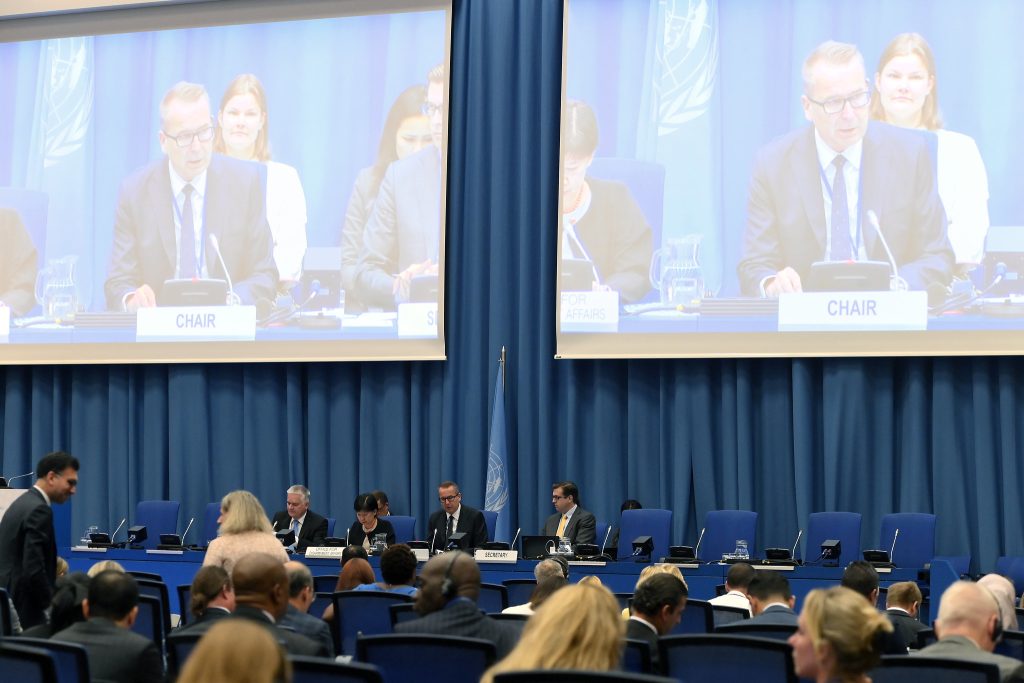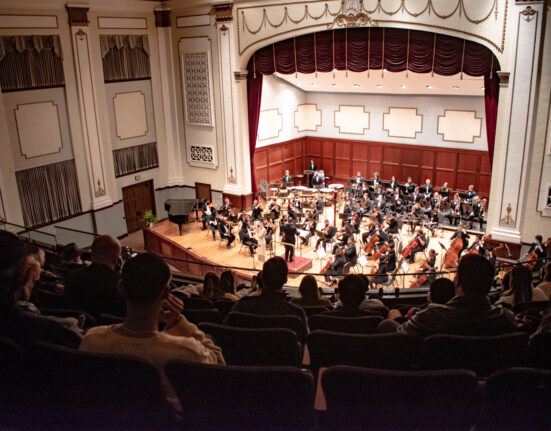Background
The proceedings and lack of agreed substantial outcome of the 2023 Session of the Preparatory Committee (2023 PrepCom) demonstrated clearly that the current review cycle of the NPT is in grave danger of becoming altogether dysfunctional in terms of its core task to “consider principles, objectives, and full implementation of the Treaty.. in order to make recommendations to the review conference” (NPT/Conf.1995/32 (Part1), Annex).
Given the failure of the 2015 and 2022 review cycles to agree on a final document, the difficulties encountered in the 2023 PrepCom cannot but negatively impact the full implementation and continued relevance and viability of the NPT as the cornerstone of the nuclear arms control and disarmament architecture. This failure was despite the exemplary efforts of the 2023 PrepCom chair and the determination of the overwhelming majority of States Parties to engage in serious discussions in good faith. It was brought about by states’ inability to reach consensus on limited issues. In some specific instances, only very few States Parties were unable to align themselves with the more significant majority. This begs the question: should NPT documents be negotiated in a more flexible way?
Given that the substantive fault lines among States Parties will persist for the foreseeable future, a more flexible approach could be to include a chairperson’s summary. Such a summary could delineate the areas where states could agree (by way of consensus) and those areas where disagreements continue to persist. Another option could be allowing states’ submission of interpretative declarations to be included in final documents.
These options are precedented. For example, the Draft Factual Summary of the 2023 PrepCom chair (NPT/CONF.2026/PC.I/CRP.3) could have served as the starting point for such a flexible approach. Indeed, this approach was derailed because of the objections of only very few States Parties. Ultimately, the text had to be withdrawn to allow for consensus on the procedural record.
A similar dynamic was at play in the working group on further strengthening the review process of the NPT (SRPWG), which occurred a week before the 2023 PrepCom. The working paper (NPT/CONF.2026/PC.I/WP.34), issued by the Chair, set out a number of proposals that could make the current review cycle decisively more meaningful, both in terms of substance and procedure.
An overwhelming majority of States Parties supported these SRPWG proposals. Therefore, those states in support must endeavour to implement these recommendations in the current review cycle. These proposals can be adhered to voluntarily and can be implemented at the discretion of the chairs of the PrepComs or the President of the Review Conference (RevCon). This adherence is, of course, subject to concurrence by States Parties, without requiring a formal decision of the Review Conference. The diplomatic corps possess the skills and the motivation to realise this goal.
Pragmatic steps forward I: The three pillars of the NPT
To prevent a further erosion of the effectiveness and efficiency of the review cycle for the full implementation of the Treaty, there is an urgent need for action.
Regarding substantive matters, the 2023 PrepCom Chair issued recommendations (NPT/CONF.2026/PC.I/6), which cover a broad range of issues for consideration at the second session of the Preparatory Committee. To allow for a focused discussion, a number of salient issues should indeed be taken up, addressing in particular:
- Accountability for the implementation of disarmament commitments and transparency for steps taken in that regard is essential in order to document progress, or lack thereof, towards reaching global zero.
- Reducing the role of nuclear weapons in security doctrines as a concrete and readily implementable nuclear risk reduction measure.
- Negative security assurances, including in the context of nuclear-weapon-free zones, should be considered in a legally binding form to enhance security and non-proliferation.
- Peaceful uses of nuclear science and technology in achieving the Sustainable Development Goals and the 2015 Paris Agreement on climate change.
- Nuclear safety and security during an armed conflict, in particular in light of the devastating humanitarian consequences of any nuclear explosion.
Pragmatic steps forward II: Strengthening the review cycle
In terms of procedural issues, the working paper from the Chair of the working group on further strengthening the review process of the NPT set out a number of pragmatic proposals that would indeed improve the effectiveness, transparency, accountability, coordination, and continuity of the review process of the NPT. These proposals could serve as a “best practice guideline” for the next review cycle. They could be considered for implementation on a voluntary basis and could develop over time to become generally accepted as a “Code of Conduct”.
Some of these proposals include:
- The structure of proceedings should be streamlined to avoid unnecessary duplication, and time limits should be imposed on statements to avoid lengthy formal statements, which could be counterproductive.
- More interactive and topical discussions to allow for more in-depth consideration of specific implementation issues, such as reporting and transparency on disarmament and non-proliferation obligations.
- A review of implementation treaty obligations, particularly concerning nuclear disarmament, during the past review cycle and future priorities concerning all three pillars of the treaty to provide for adequate consideration of important implementation issues.
- A clearer division of labour among the three Main Committees of the Review Conference to avoid unnecessary overlap of issues of a cross-cutting nature.
- The final document drafts should be circulated earlier to allow for substantial preparations and a consensus-oriented discussion.
- The chairs of PrepComs and presidents of Review Conferences should be nominated early, improving the constitution of a “bureau” to permit meaningful interaction.
- A structured handover process between the incoming chairs of PrepComs and the outgoing ”President’s Bureau” to maintain continuity over consecutive review cycles.
- In light of the dysfunctional behaviour of only very few States Parties, which cannot align themselves with the larger majority, PrepComs chairs should be able to issue reports in their personal authority.
- Standard reporting templates for NWS and NNWS, with particular provisions for NWS, to allow for the comparison of specific reports.
- Dedicated discussions concerning the implementation of Art.VI by NWS, based on agreed-upon criteria or benchmarks to document progress, or lack thereof, towards reaching global zero.
- Regional outreach by the chairs of PrepComs and the presidents of the Review Conferences and with NGOs to promote more balanced participation throughout the review cycle.
- Inclusivity of proceedings to enhance the review cycle’s efficiency and effectiveness and openness of discussions.
Given the urgency for action concerning these issues and the lack of an established intersessional process to address them, informal venues should be sought to prepare for the 2024 session of the Preparatory Committee. In light of the breadth and depth of the task, civil society, research centres, and academia should come together in an alliance to protect the NPT and engage on these issues with the incoming chairs of the Preparatory Committees, the President of the 2026 Review Conferences, and interested States Parties in a series of informal open-ended consultations.
The opinions articulated above represent the views of the author(s), and do not necessarily reflect the position of the European Leadership Network or any of its members. The ELN’s aim is to encourage debates that will help develop Europe’s capacity to address the pressing foreign, defence, and security policy challenges of our time.
Image: NPT PrepCom (01314739). Flickr, IAEA Imagebank.






